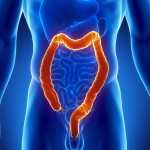I read an article in The New York Times that gave me pause for a moment. It was on fecal transplants. Initially that didn't seem to make sense. Then I remembered there had been something on this topic last year in the New England Journal of Medicine, a Dutch study done at an academic center with the title "Duodenal Infusion of Donor Feces for Recurrent Clostridium Difficile." So I did a Google search and found the Mayo Clinic's website for medical professionals where the subject was titled "Quick, inexpensive and a 90 percent cure rate."
Why in the world would you need this kind of a transplant? Well let's start with the possibility of eliminating a majority of 14,000 deaths a year in this country alone. The CDC website on the bacterial overgrowth that can cause the issue is a good resource, but let's start with a few basics. Your intestines normally have lots of different kinds of bacteria, up to 1,000 varieties according to some experts. The term "gut flora" is often used to mean our normal sea of bowel bacteria. But when you take antibiotics, especially for a prolonged time, you run a risk of getting rid of the balance between bacterial species and having some (that are normally harmless) cause major problems.
One of these kinds of potentially nasty "bugs" is called Clostridium difficile technically, or C. diff as a shortcut name. The WebMD site has an easy-to-understand short tutorial on C. diff. When it becomes the predominant gut flora it releases toxins that attack the bowel lining and causes severe diarrhea with up to 15 watery stools a day, fever, weight loss, abdominal pain and blood or pus in the stools. The disease often hits older patients (those over 65, so I'm in that higher risk category) and, in the past, was usually treated with one of three antibiotics given orally. Up to a quarter of those so treated need a second round of antibiotics.
The Dutch study randomly assigned patients to standard treatment with a drug called vancomycin, or the same drug plus four liters of a bowel-cleansing solution, or the drug plus that bowel washout plus infusion of a solution of donor feces through a tube inserted through the patient's nose and into their stomach (typically called an NG tube, shorthand for nasogastric). Less than a third of those in the first two groups had their diarrhea resolve while 81% of those given the fecal infusion (13 of 16) improved after one treatment and only one of the three remaining patients didn't improve after a second infusion.
One Mayo Clinic branch had tried a fecal transplant in 2011 in a patient with severe C. diff colitis (inflammation of the large bowel). In that case the medical staff infused the patient with their brother's stool given via a colonoscope, instead of an NG tube, therefore going up the intestinal tract, not down and getting right to the colon. The patient had been bedridden for weeks prior to the procedure, but was able to go home within one day after it.
Since then the same Mayo branch has done 24 fecal transplants. Every one of the patients had their infection go away within a short period of time; only two had a recurrence of the disease. (both had other illnesses). The senior nurse who played the major role in starting the Mayo program interviewed every patient and said their quality of life improved tremendously. Mayo now uses the procedure only for those who have severe relapsing C. diff infections, but is researching its use in other medical diseases.
Then in 2012, Mark Smith who was a doctoral candidate launched OpenBiome with three colleagues. It's a nonprofit 501 (c)(3) organization they organized after a family member/friend had gone through seven rounds of vancomycin for a C. diff infection that lasted a year and a half. They call the procedure Fecal Microbiota Transplantation (FMT) and, according to the New York Times article, they've supplied more than 135 frozen, ready-to-use Fecal Microbiota Preparations to over a dozen hospitals in the last five months. Much of the work is done in M.I.T.'s laboratories. All the medical facility needs is a doctor with an endoscope.
So have we solved the C. diff overgrowth problem or nearly so? I went back to a July 12, 2010 article in The New York Times titled "How Microbes Defend and Define Us." It described the work of a University of Minnesota gastroenterologist, Dr. Alexander Khoruts, who not only performed a fecal transplant on a woman with an intractable C. diff gut infection, but also looked closely at what bacteria were in her intestines before and after the procedure.
In this case the donor was the patient's husband and the analysis of the gut flora revealed his bacteria had taken over, supplanting the abnormal bacteria that were there before the transplant.
Khoruts continued to use the new procedure, fifteen by 2010 with 13 cures, but according to the NYT article, is now concerned that OpenBiome's model is just an early step. The Food and Drug Administration, in early 2013, classified fecal transplants as biological drugs. As such, any clinician who wished to use them would need to obtain an Investigational New Drug (IND) application, much as a pharmaceutical company would need in developing a new antibiotic.
Since then the FDA has relaxed their ruling, slightly, saying doctors performing FMTs for C. diff wouldn't be prosecuted. Smith and colleagues want FMT to be classified as a tissue, not a drug, allowing more research to be done on the procedure in other diseases and conditions and, at the same time, letting clinicians use FMT, at least for C. diff, without an IND permit or fear of FDA reversing its stance on such therapy.
There are a host of other diseases where FMT has been suggested as possibly effective in treatment. Some seem farfetched to me at first glance, but investigators appear interested in pursuing research on many of those conditions. I bet they would need an IND in such cases, even if FMT is reclassified as a tissue.
Khoruts and others think FMT for C. diff is just the tip of the iceberg. The NIH has been carrying out a huge Human Microbiome Project since 2007 with the first five years of the investigational study being devoted to cataloging the microbiome of our noses, skin, mouths, GI tracts and urogenital systems. That term refers to the aggregate of all the microorganisms, including bacteria and fungi that live on and in our bodies. From 2013 on they have shifted gears, aiming at an integrated dataset of biological properites in microbiome-associated diseases.
Having read a number of papers and looked at a variety of source materials on the concept I'm no longer astounded by the idea. It still sounds strange, but obviously reputable academic centers have pioneered this research with great results.
One question that seems unresolved was highlighted on a patient-website. Is my bowel flora the same as someone's who lives in another part of the world and eats a totally different diet?
But it seems like FMT, in one form or another, is here to stay.





